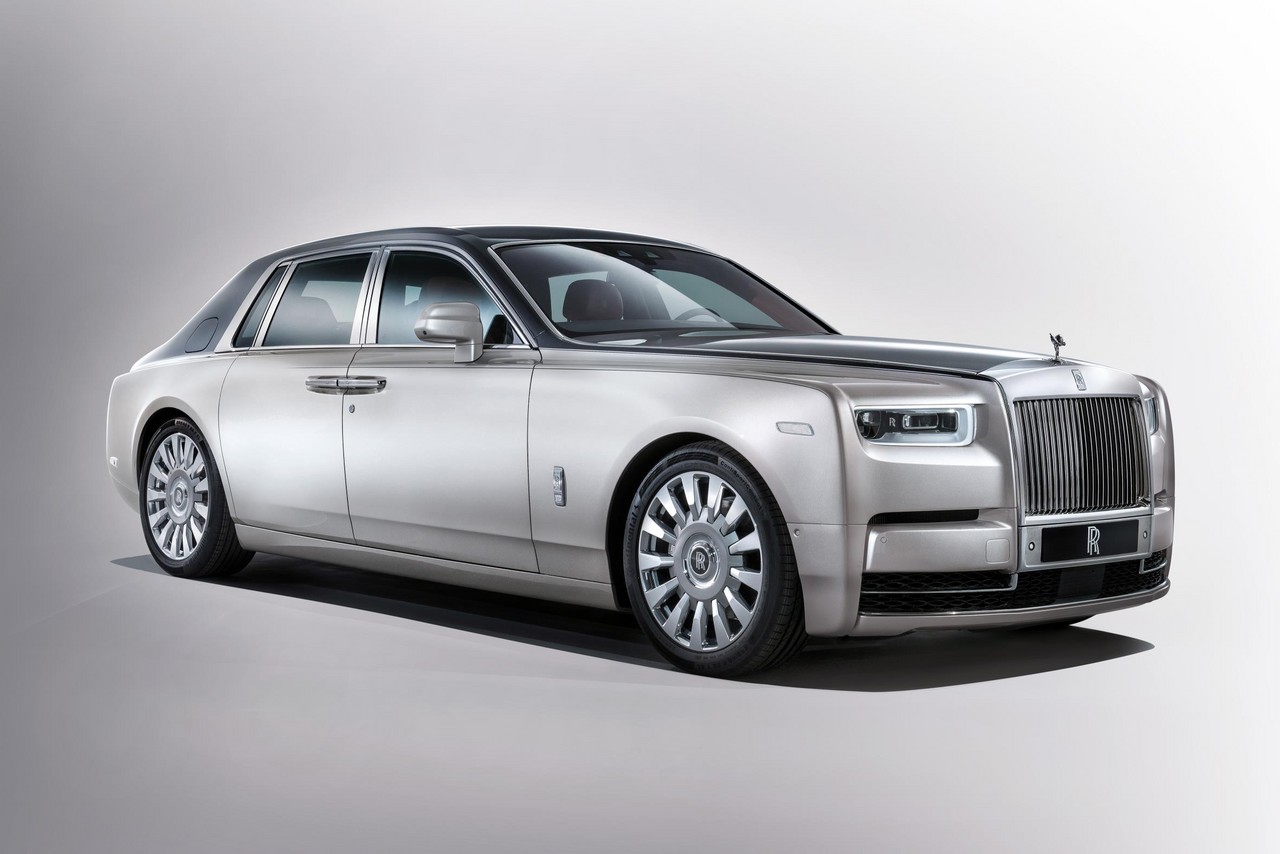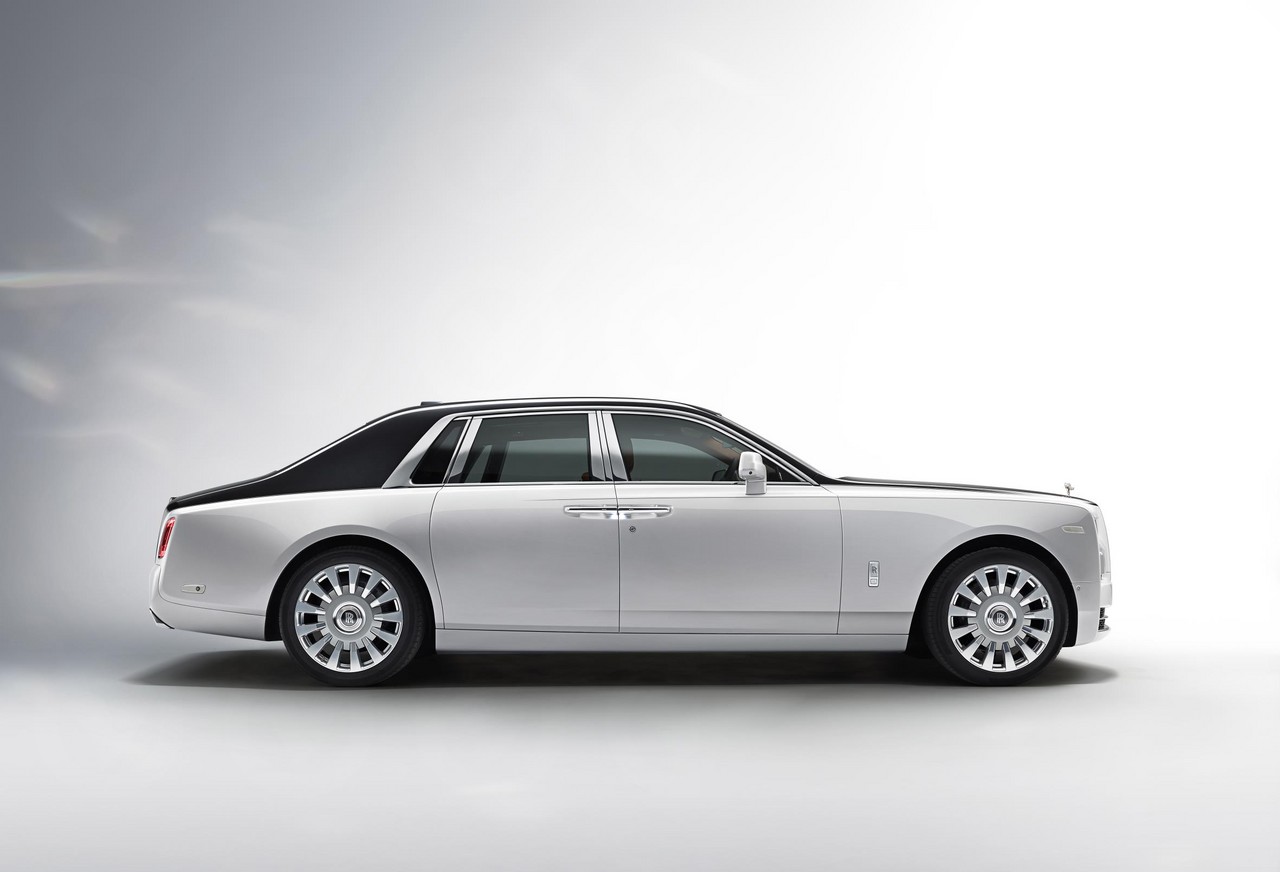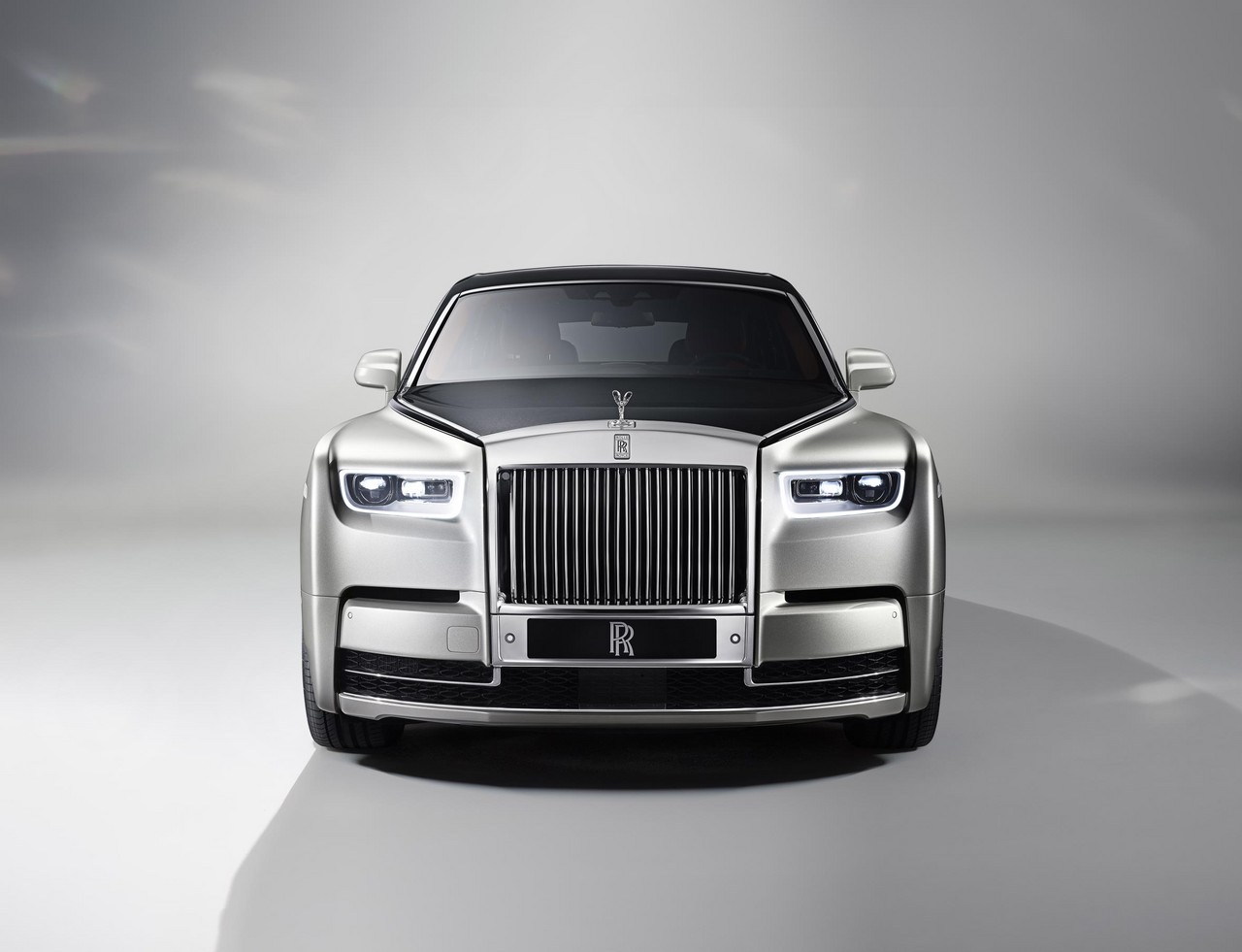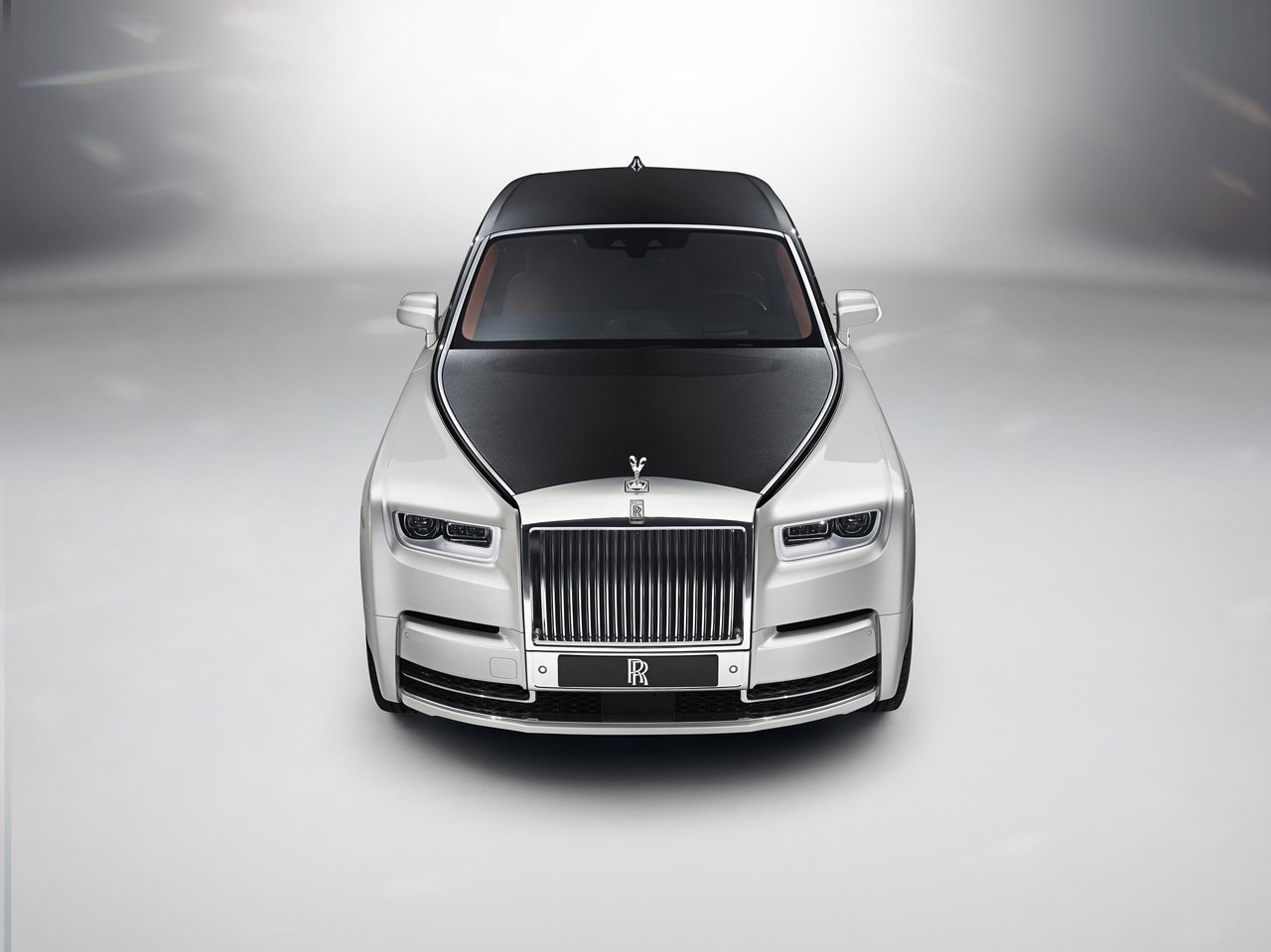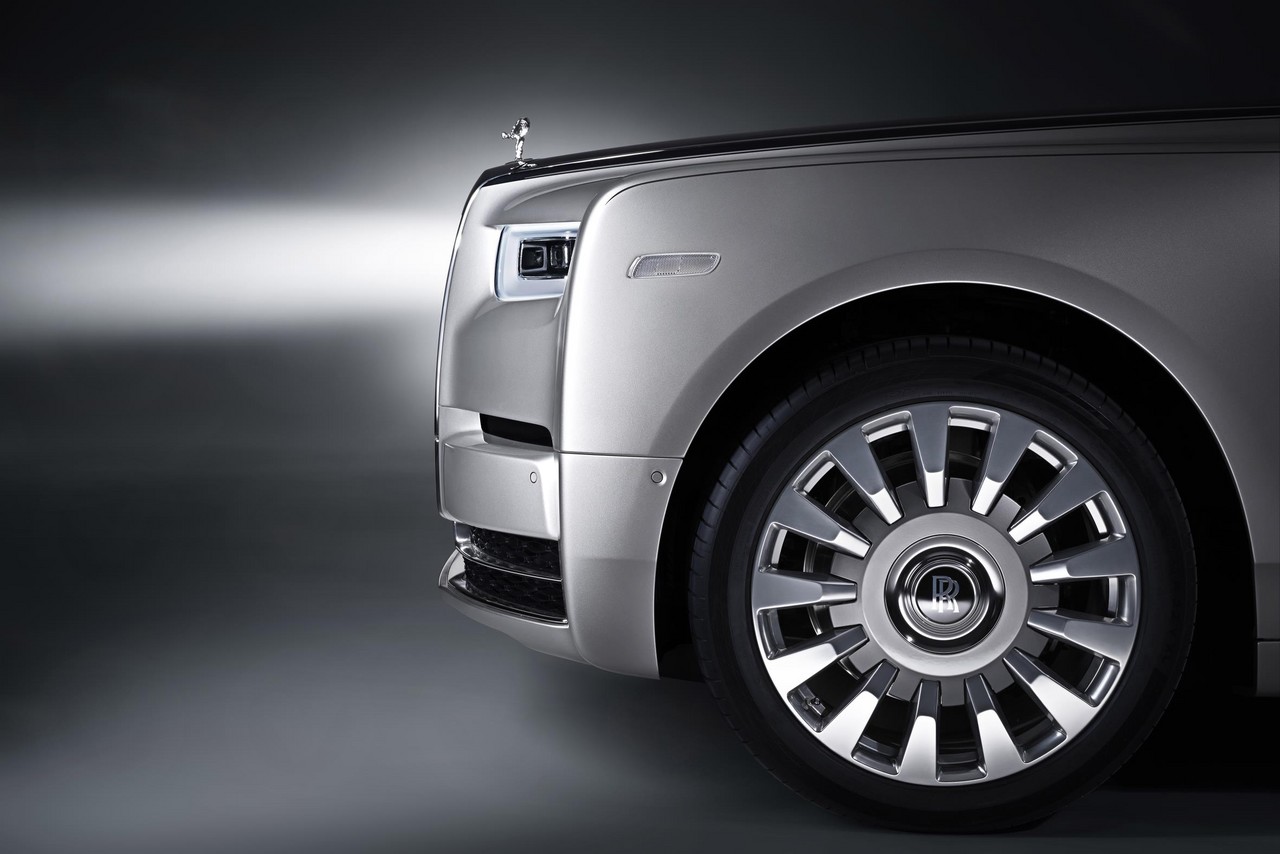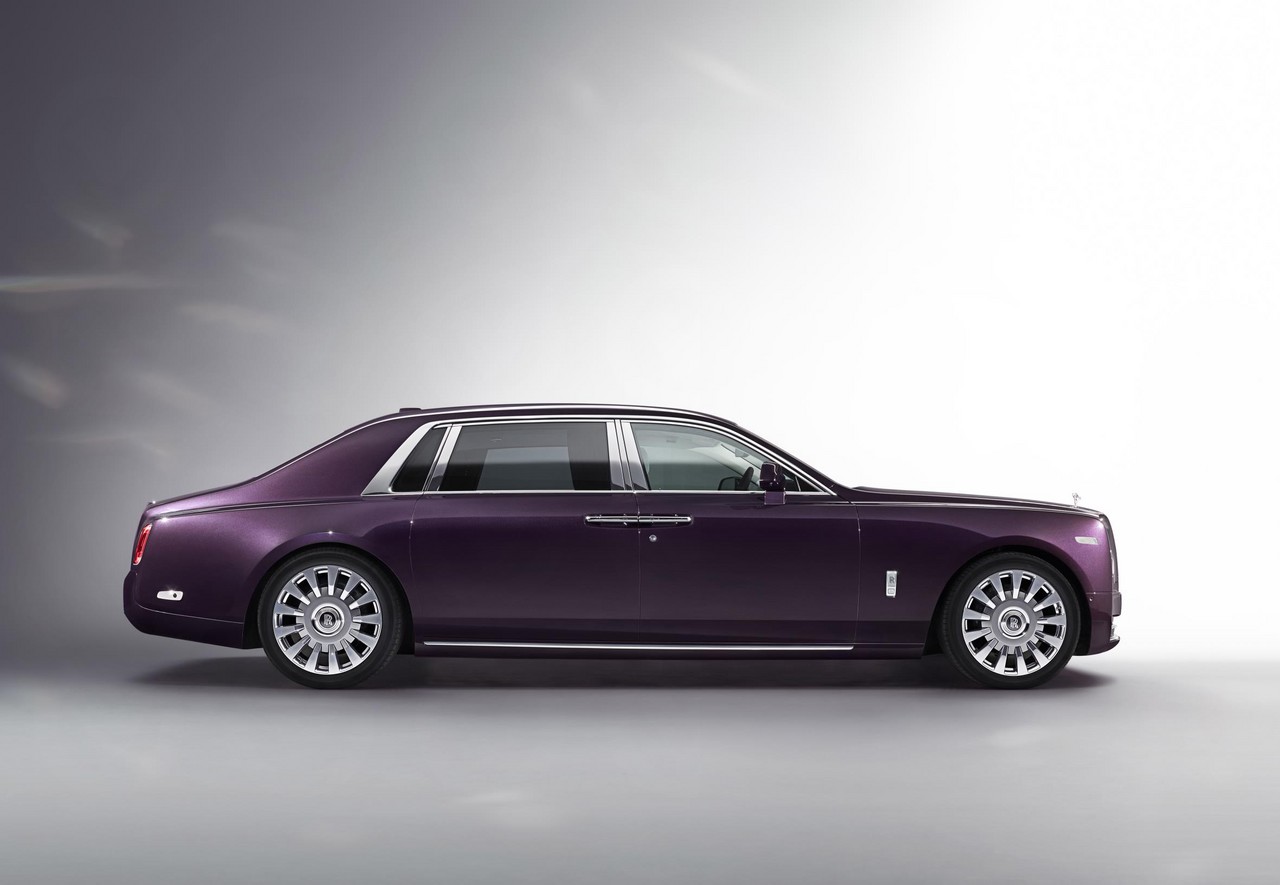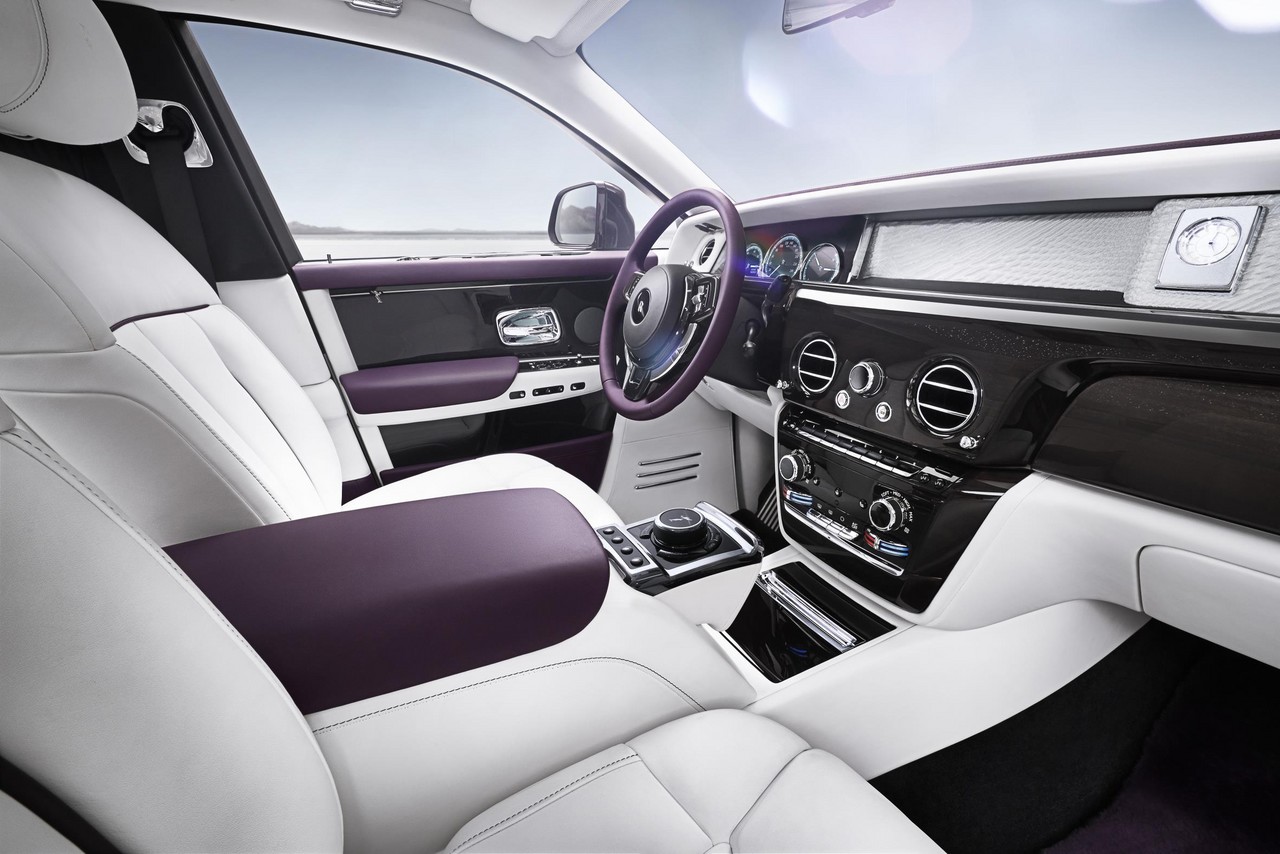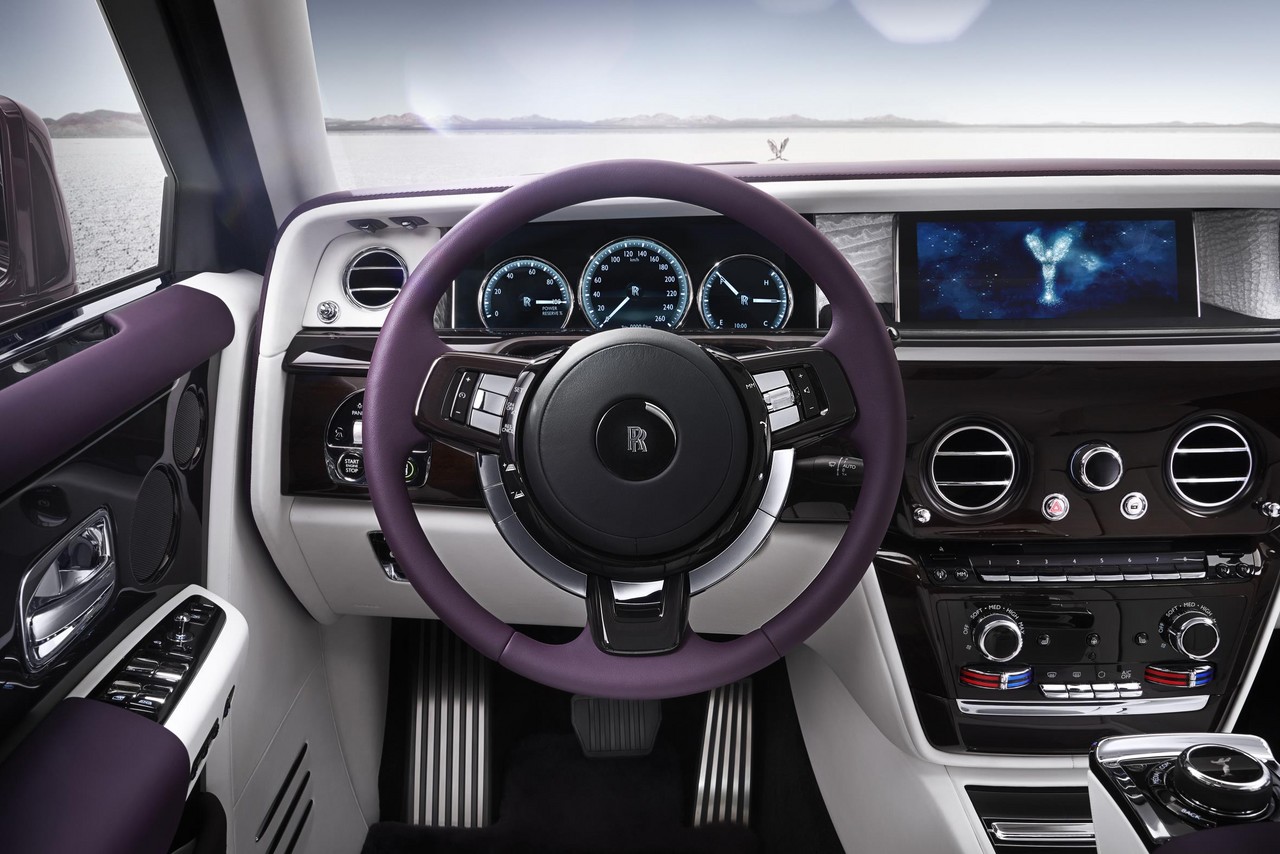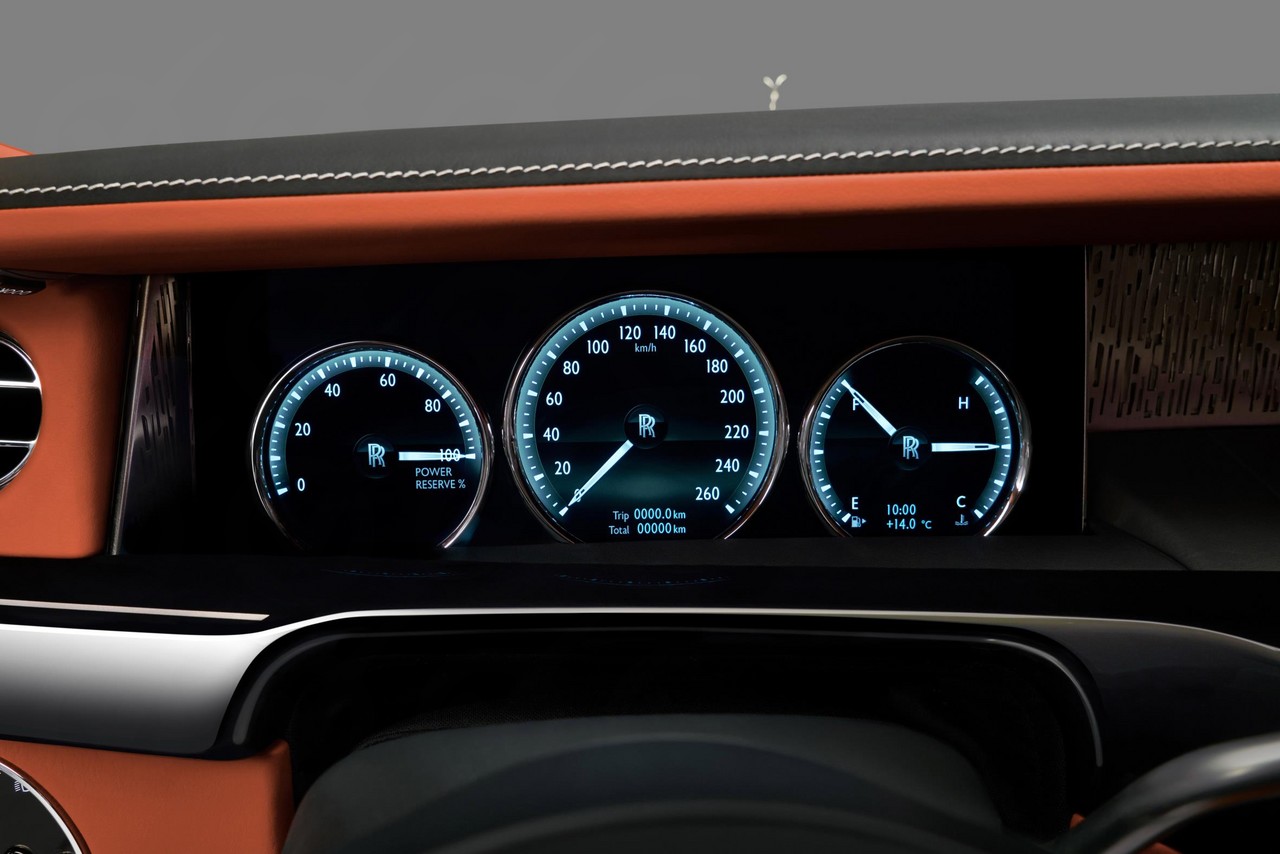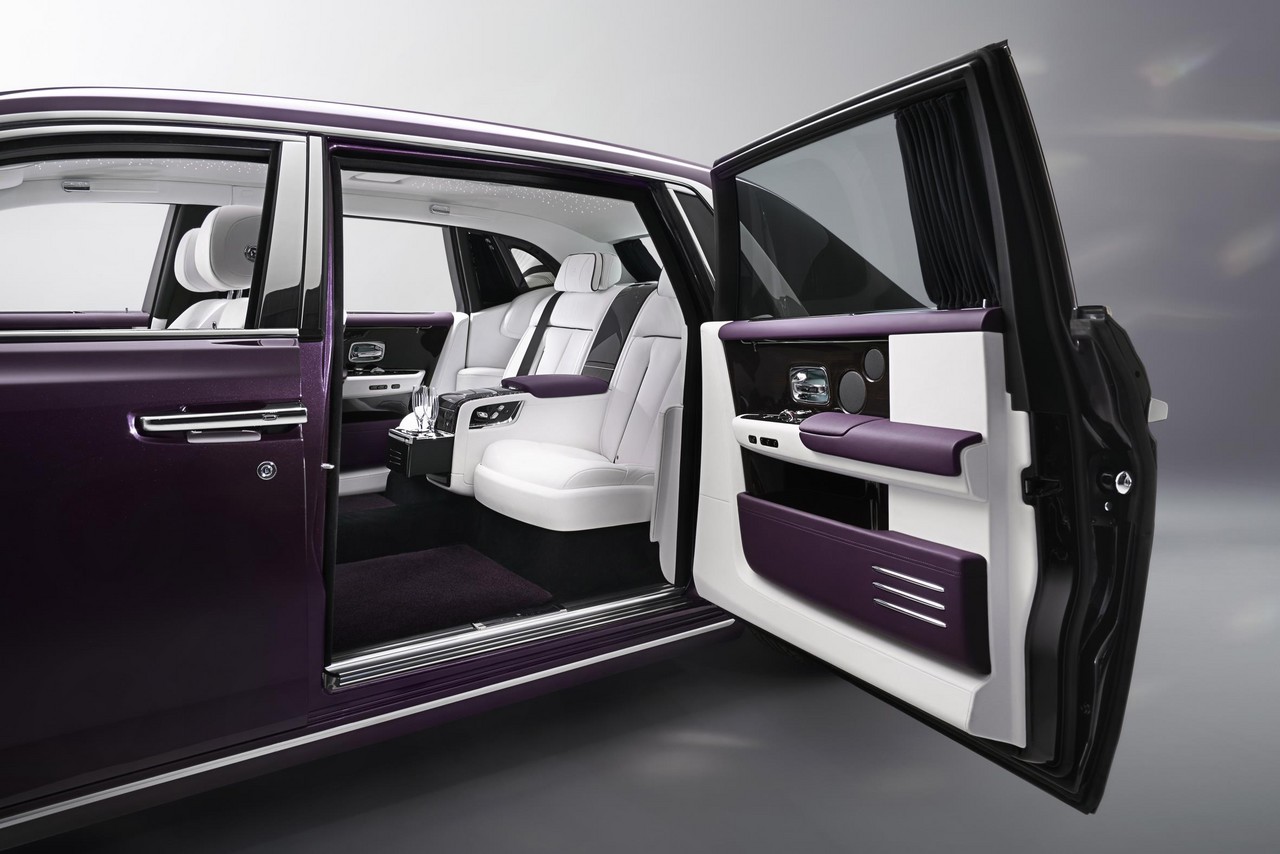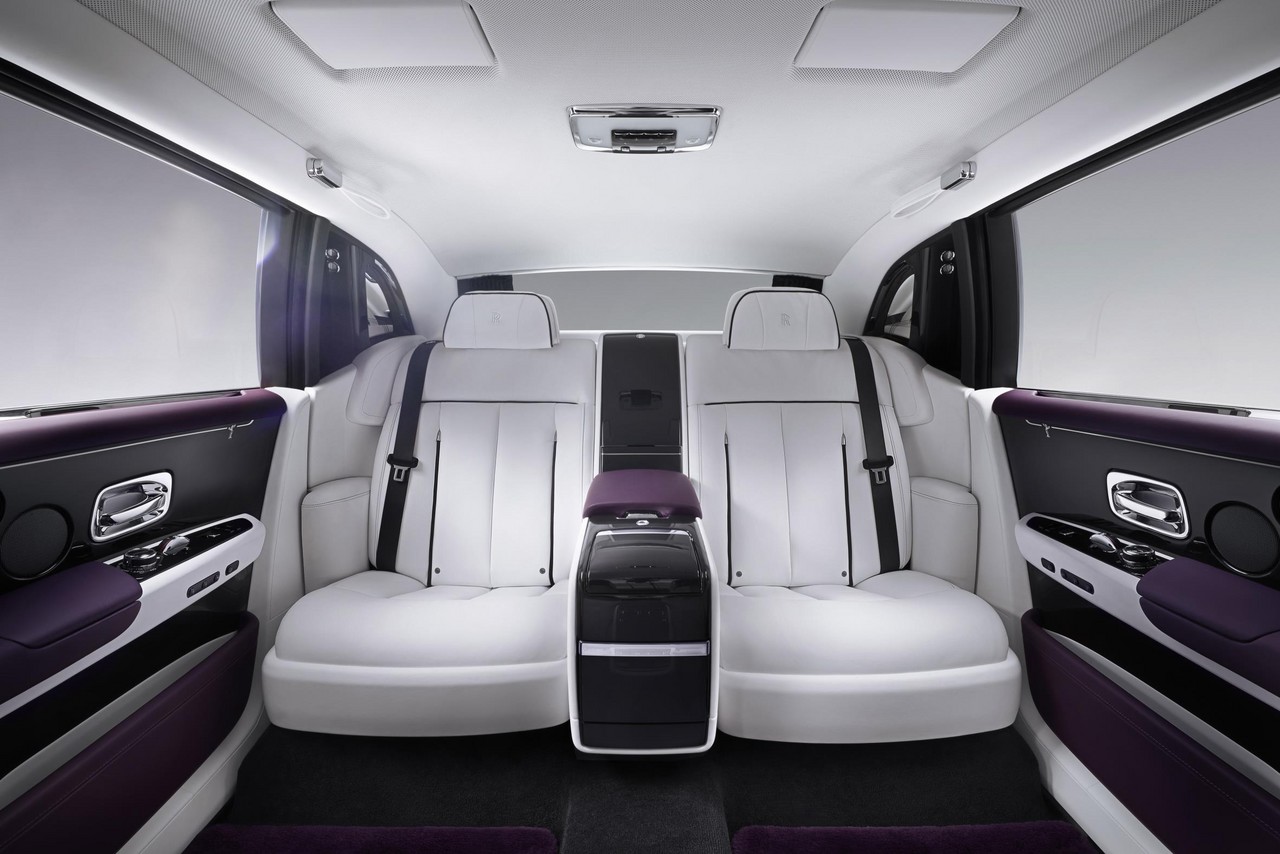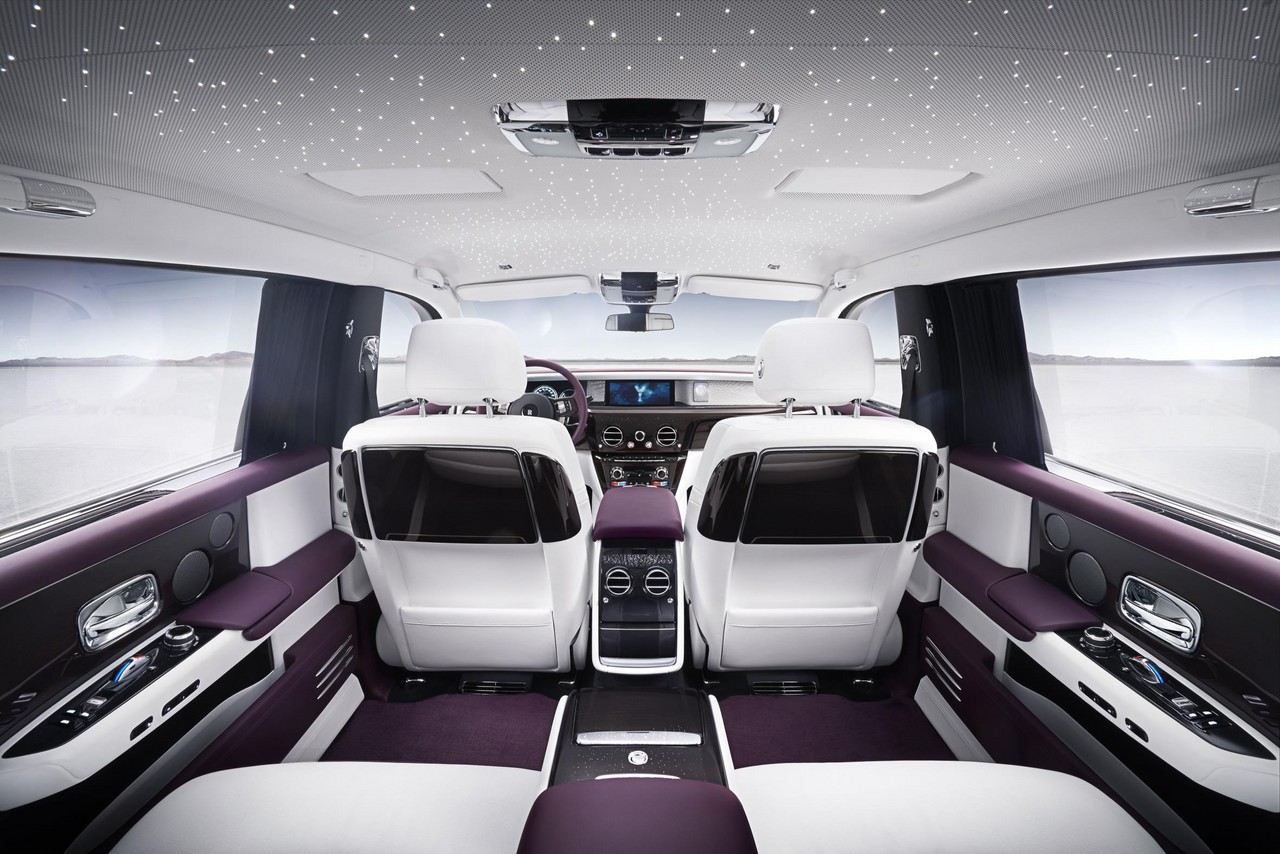
- Powerful 6.75-litre twin-turbo V12 engine
- Refined eight-speed ZF transmission
- Comfortable, cosseting ride
- Outstanding interior materials and craftsmanship
- Quiet, well-insulated cabin
- High running, servicing and depreciation costs
Overview
Expected to commence deliveries in 2018, the Rolls-Royce is a large, prestige sedan. Manufactured in Goodwood, England, the eight generation Rolls-Royce Phantom (or ‘Phantom VIII’) is powered by a 6.75-litre twin turbo V12 petrol engine that is mated to an eight-speed automatic transmission.
6.75-litre V12 engine
While Rolls-Royce Motor Cars describes the 6.75-litre twin-turbo V12 petrol engine as ‘all new’ and ‘completely new’, AustralianCar.Reviews suspects that it is an evolution of the N74B66 V12 petrol engine which powers the Rolls-Royce Ghost , Dawn and Wraith . Key features of the N74 engine include its closed deck design, aluminium-silicon alloy (‘Alusil’) crankcase, double main bearing bolting, forged crankshaft, cracked forged connecting rods, iron-coated pistons, aluminium alloy cylinder head, double overhead camshafts driven by a tooth-roller type chain, four valves per cylinder actuated by roller cam followers, variable intake and exhaust valve timing (‘double VANOS’), variable intake valve lift (‘Valvetronic’), single scroll turbochargers for each cylinder bank and direct injection via piezo injectors.
| Engine | Trans. | Peak power | Peak torque | |
|---|---|---|---|---|
| Phantom VIII | 6.75-litre twin-turbo petrol V12 | 8sp auto | 420 kW | 900 Nm at 1700 rpm |
ZF 8HP90 transmission
The Rolls-Royce Phantom VIII is fitted with ZF’s 8HP90 eight-speed automatic transmission as standard. For the Phantom, the transmission features a Satellite Aided Transmission (SAT) function which uses GPS data to monitor the driver’s predicted route and automatically select the right gear for the road ahead to avoid unnecessary gear changes.
Body and dimensions
The Phantom VIII is based on Rolls-Royce’s ‘Architecture of Luxury’ platform, an all-aluminium space-frame architecture. The architecture is scalable to size and weight requirements – including those with different propulsion, traction and control systems – and will be used for every future Rolls-Royce, including the next Ghost, Wraith and Dawn models. As such, no future Rolls-Royce will be of monocoque construction. According to Rolls-Royce, the body of the Phantom VIII is around 30 per cent more rigid than that of the Rolls-Royce 1S68 Phantom .
The Rolls-Royce Phantom VIII has the following noise reduction properties:
- 6 mm two-layer glazing is used all around the car;
- More than 130 kg of sound insulation;
- Largest ever cast aluminium joints in a body-in-white;
- The use of double skin alloy on areas within the floor and bulkhead of the spaceframe, with dense foam and felt layers between these skins;
- High absorption layers within the headliner, doors and boot cavity; and,
- ‘Silent-Seal’ tyres which have a foam layer inside the tyre to reduce tyre cavity noise and overall tyre noise by 9 decibels.
According to Rolls-Royce, the Phantom VIII is approximately 10 per cent quieter than the 1S68 Phantom when driving at 100 km/h.
Rolls-Royce is yet to announce dimensions for the standard and extended wheelbase versions of the Phantom VIII.
Suspension and steering
The Rolls-Royce Phantom VIII has a double wishbone front axle and five-link rear axle. Furthermore, the self-levelling air suspension includes electronically-controlled shock absorbers which adjust damping forces in response to body and wheel acceleration, steering inputs and camera information. For the latter, the stereo camera (Rolls-Royce’s ‘Flagbearer’) is integrated in the windscreen to monitor the road ahead so that the suspension can be adjusted proactively when driving at speeds up to 100 km/h.
The Rolls-Royce Phantom VIII has four-wheel steering. At parking speeds, the rear wheels turn in the opposite direction to the front wheels to reduce the turning radius; at higher speeds, the rear wheels turn in the same direction as the front wheels for greater stability.
Safety equipment
Standard safety equipment for the Rolls-Royce Phantom VIII is expected to include dual front airbags, front seat-mounted side airbags, full-length curtain airbags (i.e. for front and rear occupants), ABS, electronic brake force distribution, brake assist, electronic stability control, traction control, active front seat head restraints and seatbelts with pre-tensioners and load limiters for all seats.
The Rolls-Royce Phantom VIII will also be available with the following active safety technologies:
- Collision warning;
- Pedestrian warning;
- Active Cruise Control;
- Lane departure and lane change warning;
- Alertness Assistant;
- Night Vision and Vision Assist;
- Cross-traffic warning;
- A four-camera system with Panoramic View; and,
- All-round visibility including helicopter view.
Features: Rolls-Royce Phantom VIII
While standard features are yet to be announced, the Rolls-Royce Phantom VIII will be available with satellite navigation, Bluetooth connectivity with voice recognition, a Wi-Fi hotspot, dual-zone climate control air conditioning, leather upholstery, power adjustable front seats, heated seats, cruise control, laser headlights which have a maximum range of 600 metres, front and rear parking sensors, a cooled glovebox, dusk-sensing headlights, rain-sensing wipers, a leather-wrapped steering wheel, a 7×3 high-resolution head-up display (HUD), remote central locking, power windows, power adjustable and heated door mirrors with folding function and automatic dipping on reverse, a power adjustable steering column, an electric park brake, 12 volt power outlets, front seat memory settings, courtesy lamps, tinted windows, tyre pressure monitoring, a trip computer, alarm and immobiliser. Inside, the Phantom VIII also features Rolls-Royce’s ‘Starlight’ headliner which has thousands of fibre optic lights hand-woven into the roof lining.
For the rear seats, the Phantom VIII can be specified with a lounge seat, individual seats with an ‘occasional’ armrest, individual seats with fixed centre console or a sleeping seat.
